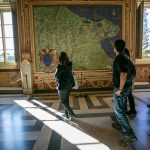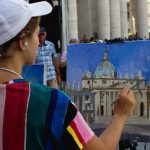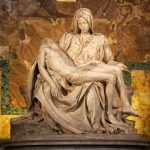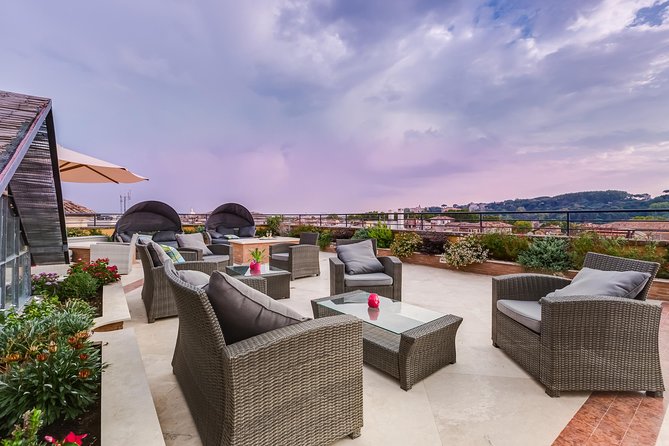Pre-Post Cruise Private Tour of Rome
Rome, Italy
5 to 8 hours (Approx.)
Mobile ticket
Offered in: English
Overview
Before starting your cruise or right after leaving your ship you can start or end with one of our private tours. Transfers and visits included in the 5hrs or 8hrs tour. You can decide whether or not to enter the Colosseum or Vatican Museums or make your tour more relaxing simply by stopping to take some pictures of the most incredible attractions of the Eternal City. The tour is completely customizable. You can ask your driver to change your destination based on your requests.
Tour of Rome (5hrs): It is possible to visit the Colosseum. It is not possible to visit the Vatican Museums.
Rome Tour (8hrs): you can request to visit both the Colosseum and the Vatican Museums.
Skip-the-line tickets are not included in the tour price. On request we can buy for you the Colosseum tickets (Eur 25.00 per person) and the Vatican Museums, Sistine Chapel and St. Peter's Basilica (Eur 30.00 per person)
Tour of Rome (5hrs): It is possible to visit the Colosseum. It is not possible to visit the Vatican Museums.
Rome Tour (8hrs): you can request to visit both the Colosseum and the Vatican Museums.
Skip-the-line tickets are not included in the tour price. On request we can buy for you the Colosseum tickets (Eur 25.00 per person) and the Vatican Museums, Sistine Chapel and St. Peter's Basilica (Eur 30.00 per person)
What's Included
Post-Cruise: pick up from the port of Civitavecchia and drop off to Rome or FCO airport.
Pre-Cruise: pick up from your Hotel or FCO Airport, drop off to the port of Civitavecchia.
English speaking driver.
Luxury Mercedes E or V Class.
We can purchase for you the skip the line tickets. Price of the tickets is NOT included.
Skip the line for the Colosseum, Roman Forum and Palatine hill (Eur 25,00 pp)
Skip the line tickets for the Vatican Museums, Sistine Chapel and St.Peter's Basilica (Eur 30,00 PP)
Licensed tour guide. You can request a private tour guide for the walking tour of Col. & Vat.
Gratuities (not mandatory)
Departure & Return
What To Expect
Itinerary
The Colosseum was commissioned around A.D. 70-72 by Emperor Vespasian of the Flavian dynasty as a gift to the Roman people. In A.D. 80, Vespasian’s son Titus opened the Colosseum–officially known as the Flavian Amphitheater–with 100 days of games, including gladiatorial combats and wild animal fights. After four centuries of active use, the magnificent arena fell into neglect, and up until the 18th century it was used as a source of building materials. Though two-thirds of the original Colosseum has been destroyed over time, the amphitheater remains a popular tourist destination, as well as an iconic symbol of Rome and its long, tumultuous history.
Duration: 45 minutes
Admission Ticket Not Included
The first temple was built by Marcus Agrippa, son-in-law of the Emperor Augustus between 27 and 25 BC. However, this temple was destroyed by fire in AD 80. It is thought the original temple was rebuilt and once again destroyed by fire caused by a lightening strike before the current structure was built. The existing structure was designed by Emperor Hadrian in AD 118 and completed in AD 128. The entire collection of Roman gods was called the Pantheon, and in fact in ancient times you could worship any of the gods whose statues were located in the niches in the Pantheon. If modern unreinforced concrete were used in a building of the size of the Pantheon in Rome it would not stand under the load of its own weight. The composition of the concrete used in the dome is still unknown.
Duration: 15 minutes
Admission Ticket Free
The Trevi Fountain, one of the most beautiful and famous fountains in all of Italy, is among Rome’s top sites. Completed in 1762, after thirty years of construction, this stunning example of baroque architecture sits prominently in the Piazza di Trevi.
Duration: 15 minutes
Admission Ticket Free
The Spanish Steps is one of Rome's most famous attractions and a popular gathering spot, but was intended as a gateway to the church that rests atop the staircase.The elegant staircase of 135 steps was inaugurated in the Jubilee Year of 1725 by Pope Benedict XIII, originally used to link the Bourbon Spanish Embassy to the Church of Trinità dei Monti. The name comes from the Spanish Embassy to the Vatican that has been located in the piazza since the 1600s.Piazza di Spagna was named after the Spanish Embassy to the Holy See, although the staircase, designed by the Italian Francesco de Sanctis, was built in 1725 with money bequeathed by a French diploma
Duration: 15 minutes
Admission Ticket Free
The most beautiful square of Rome is built on the site where the Stadium of Domitian (Circus Agonalis), founded in 86 AD, once stood. It could hold approximately 20,000 spectators, which came here to see different athletic competitions. The main attraction of Piazza Navona are its three fountains, designed during the papacy of Gregory XIII. Erected in the centre of Piazza Navona, the Fontana dei Quattro Fiumi (Fountain of the Four Rivers) was designed by Bernini in 1651.
Duration: 15 minutes
Admission Ticket Free
The Circus Maximus is an ancient Roman chariot-racing stadium and mass entertainment venue located in Rome, Italy. Situated in the valley between the Aventine and Palatine Hills, it was the first and largest stadium in ancient Rome and its later Empire
Duration: 5 minutes
Admission Ticket Free
Piazza Venezia is the central hub of Rome, Italy, in which several thoroughfares intersect, including the Via dei Fori Imperiali and the Via del Corso. It takes its name from the Palazzo Venezia, built by the Venetian Cardinal, Pietro Barbo alongside the church of Saint Mark, the patron saint of Venice.
Duration: 5 minutes
Admission Ticket Free
View from the Capitol Hill
The Roman Forum, also known by its Latin name Forum Romanum, is a rectangular forum surrounded by the ruins of several important ancient government buildings at the center of the city of Rome. Citizens of the ancient city referred to this space, originally a marketplace, as the Forum Magnum, or simply the Forum.
Duration: 15 minutes
Admission Ticket Free
The piazza came about because Charles V, Holy Roman Emperor, organized a visit to Rome in 1536. Pope Paul III was so dismayed by the state of the sodden Capitoline Hill that he commissioned Michelangelo to design a square. Michelangelo wanted the square to face St Peter’s Basilica, the political centre of Rome, instead of the Roman Forum. He also proposed the construction of another palace, Palazzo Nuovo, which would face Palazzo dei Conservatori. This palace, in its turn, would have a new façade. The Palazzo Senatorio’s front would also be redesigned so that all the buildings and the square would work harmoniously.
Duration: 15 minutes
Admission Ticket Free
Additional Info
- Confirmation will be received at time of booking
- Wheelchair accessible
- Stroller accessible
- Near public transportation
- Infant seats available
- Most travelers can participate
- This is a private tour/activity. Only your group will participate
Cancellation policy
For a full refund, cancel at least 24 hours in advance of the start date of the experience. Learn more about cancellations.
Customers have also been looking at these Rome Tours
Boat Tours
Self-guided Tours & Rentals
Unique Experiences












